My garden is largely a tropical holiday filled with luxurious foliages and a fruit salad of orange, hot pink, red and gold flowers.
A sprinkling of blue grounds that hot colour in a garden bed that sweeps around an oval lake of lawn. In summer the best thing to do is find a seat in the shade and soak it up.
_web.jpg)
Welcome to Robin's garden.
I’m loving… brugmansia
Ugly name, but there is nothing more beautiful than a canopy of brugmansias in full flower! As a bonus the evening perfume wafts through the garden. I
grow a few different colours – the common apricot one, a pink one and a gold one with delicately fluted edges. These are very adaptable plants and
you can make them fill whatever spot you have. Out the front I have less room so my brug is pruned to a standard. Each winter I trim it back hard to
a handful of knuckles so that the canopy is a tight umbrella, and a total showstopper when in flower. Out the back I use the plants for screening and
let them go a bit more, pruning as needed. They form tiers of flowers, blooming a few weeks after rain, or a heavy soaking from the water tank. These
plants totally over deliver – and are still flowering in mid-winter. The only downside is picking up the very many fallen flowers, which if left where
they lie look a bit like desiccated rat carcasses. Yes, really not nice.
.jpg)
Non-stop flowering Brugmansia
I’m admiring… my underwater garden
There’s nothing underwater about this garden at all, except that it looks to me like a garden of coral over which I am happily snorkelling. In fact the
garden is mostly tillandsias and crucifix orchids, resting on the root ball of twin date palms planted when the house was built early last century.
You can’t put a pickaxe into that root ball, so the only options are plants that don’t need soil. These do the job beautifully.
.jpg)
Robin's underwater garden.
I’m filling… gaps
My favourite filler is coleus, a genus now known as solenostemon. The colours range from lime green to burgundy, with dabs and trims of hot pink
and purple. They love a bit of shade, are easy to grow from cuttings and can be persuaded, with some water, fertiliser and tip pruning, to snuggle
up to begonias, dahlias, cannas, lilies – anywhere I have a gap. They send up flower spikes of lavender flowers, but because these cause the stems
to grow lanky I trim them off in favour of great clumps of that brilliant foliage. In areas that get too hot for coleus the little sedum called ‘Gold
Mound’ stars in the same role.
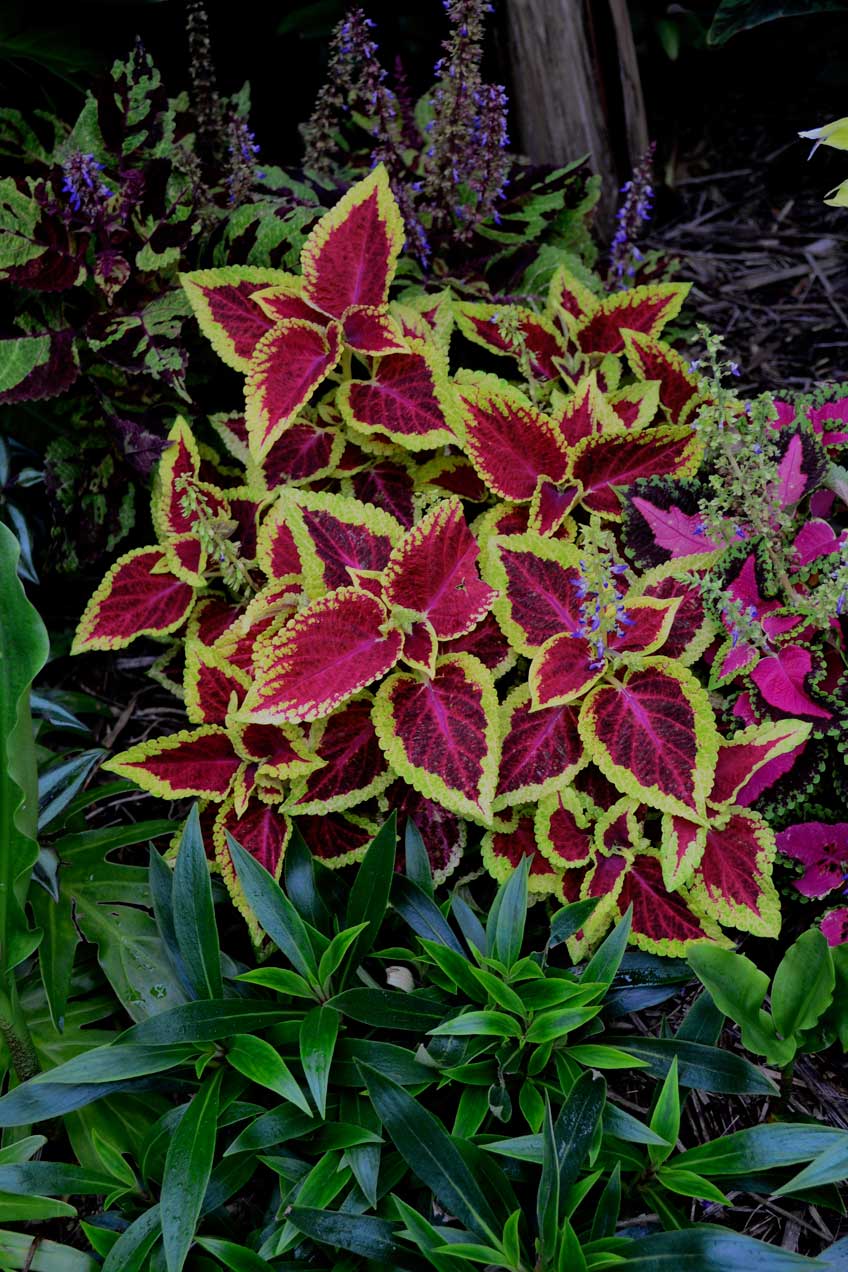
Coleus
I’m planning…a change
The variegated ribbon grass that grows at the foot of my frangipani is disappointing plant material. It harbours baby snails that make nightly attacks
on the cordyline foliage, and the tips brown off in an unappealing way I’m considering my options, and leaning towards ferns. I love the way they look
so soft and floaty, even when they are tough and hardy. Silver lady ferns, Blechnum gibbum, have an especially lovely colour and form. I like
them best in a gang, so I’m thinking three will do nicely.

Out with the variegated ribbon grass...
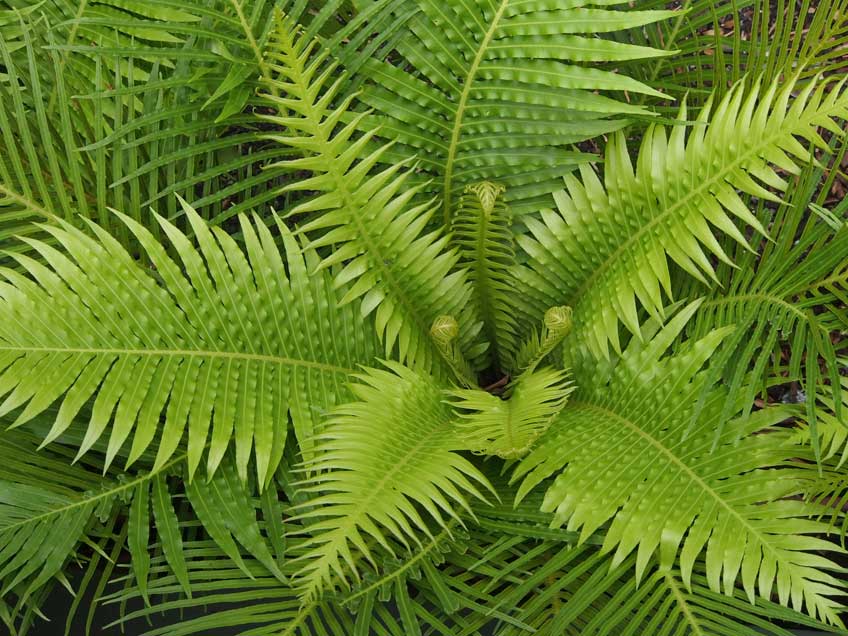
And in with ferns like this Silver Lady
It’s time to…
Watch out for rust. This is the biggest scourge in my garden. It affects the cannas, evergreen fuchsias and frangipani. I keep a vigilant eye out, bin
affected leaves, and spray with Eco-fungicide.
Trim whippy new growth on wisteria back to 30cm.
Look for baby snails in the crowns of the cordylines.
Hang lures for fruit fly in the pomegranate as the fruit develop.
Cut the single-flowered bedding dahlias back early in the new year for a repeat show in autumn.
Remove spent canes from the clump of shell ginger to keep it looking tidy.
Water with soil wetter, such as Eco-hydrate, to enable soil to receive water.
Keep the water up to the potted lemons.
Fertilise basil and parsley with liquid feed fortnightly to allow for plenty of pesto.
Empty the tank on sun-dried areas of garden, then replenish the mulch.
Collect fallen frangipani to decorate the dining table.
Trim star jasmine into neat columns.
Plant List
Pink banana
Musa velutina is an ornamental banana that doesn’t get too tall. The leaves are a fresh lime green and the pink flowers form hot pink, fluffy-skinned mini-bananas,
which sadly aren’t edible.
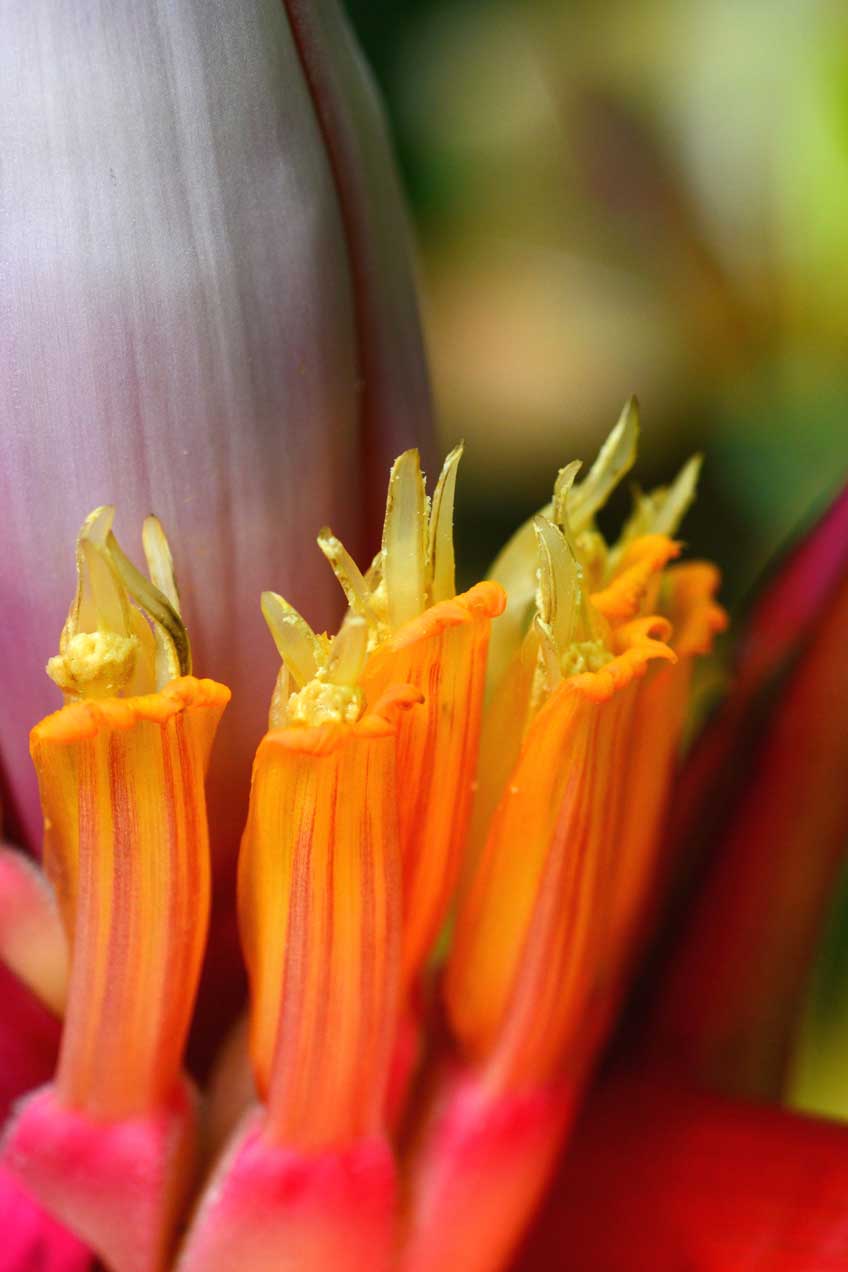
pink banana
Blood banana
Musa zebrina is an ornamental banana with purple-backed leaves that are splotched on the front with patches of purple. Best planted in a sheltered spot
as the wind turns the leaves to rags.
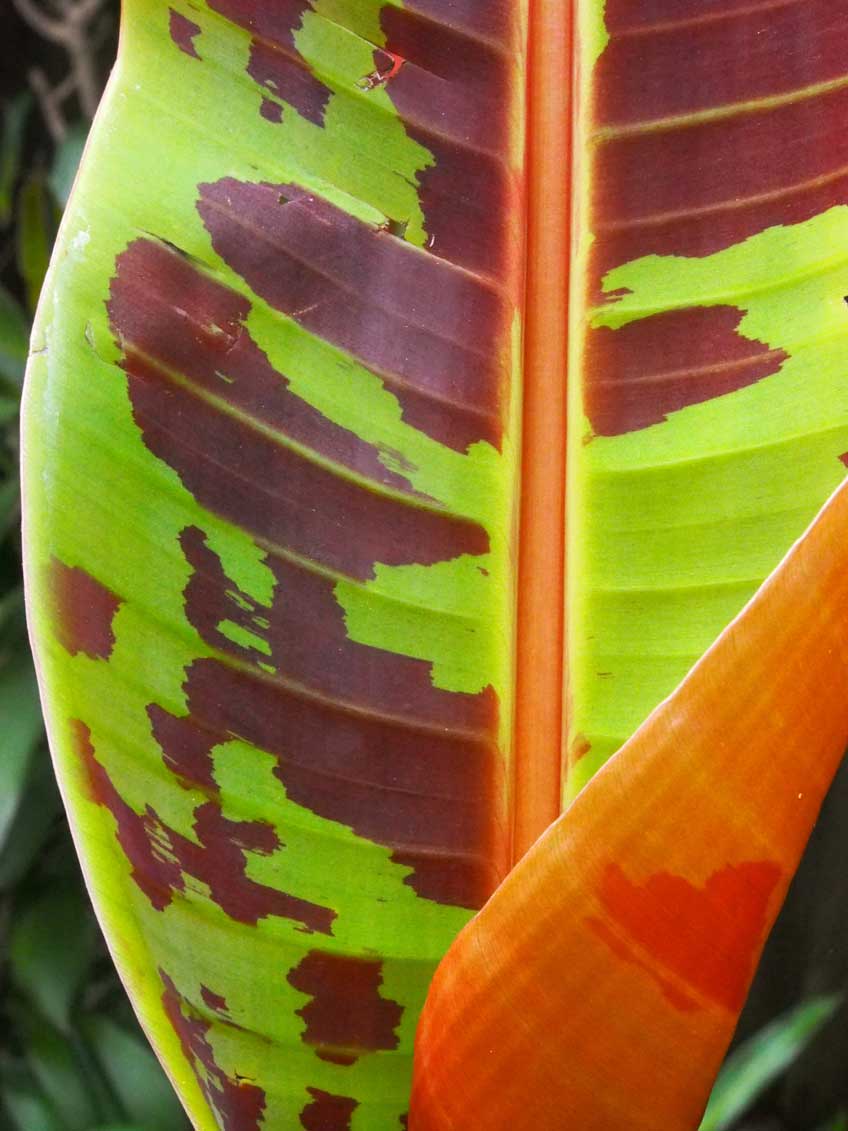
Blood Banana
Tibouchina heteromalla
This is a shrubby version of tibouchina, with felty grey leaves and small purple-blue flowers. It’s a little bit big for the spot I have it in, so is cut
almost to the ground each winter to contain the growth.
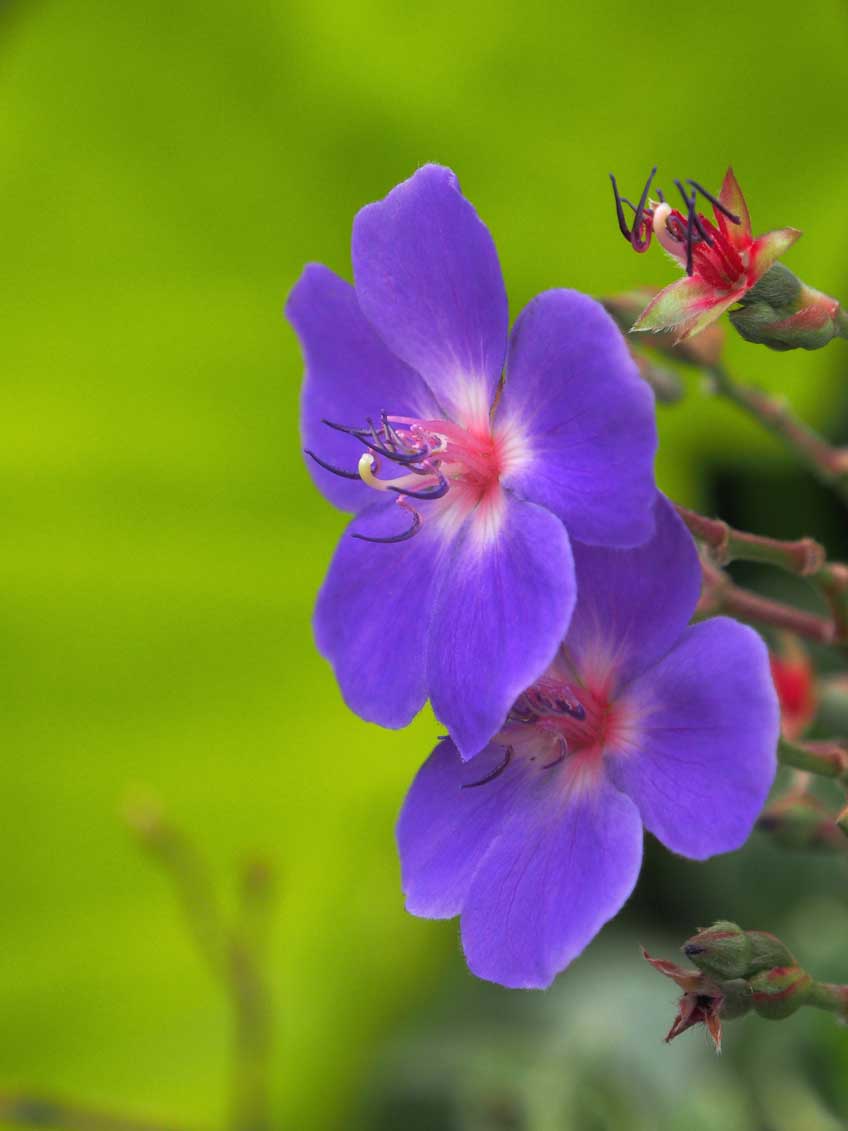
Tibouchina heteromalla
Gloriosa lily
I love the way these lilies surprise me each summer just as I’ve forgotten about them. They delicately wind their way through a frangipani, flowering at
Christmas with pretty downward-facing blooms.
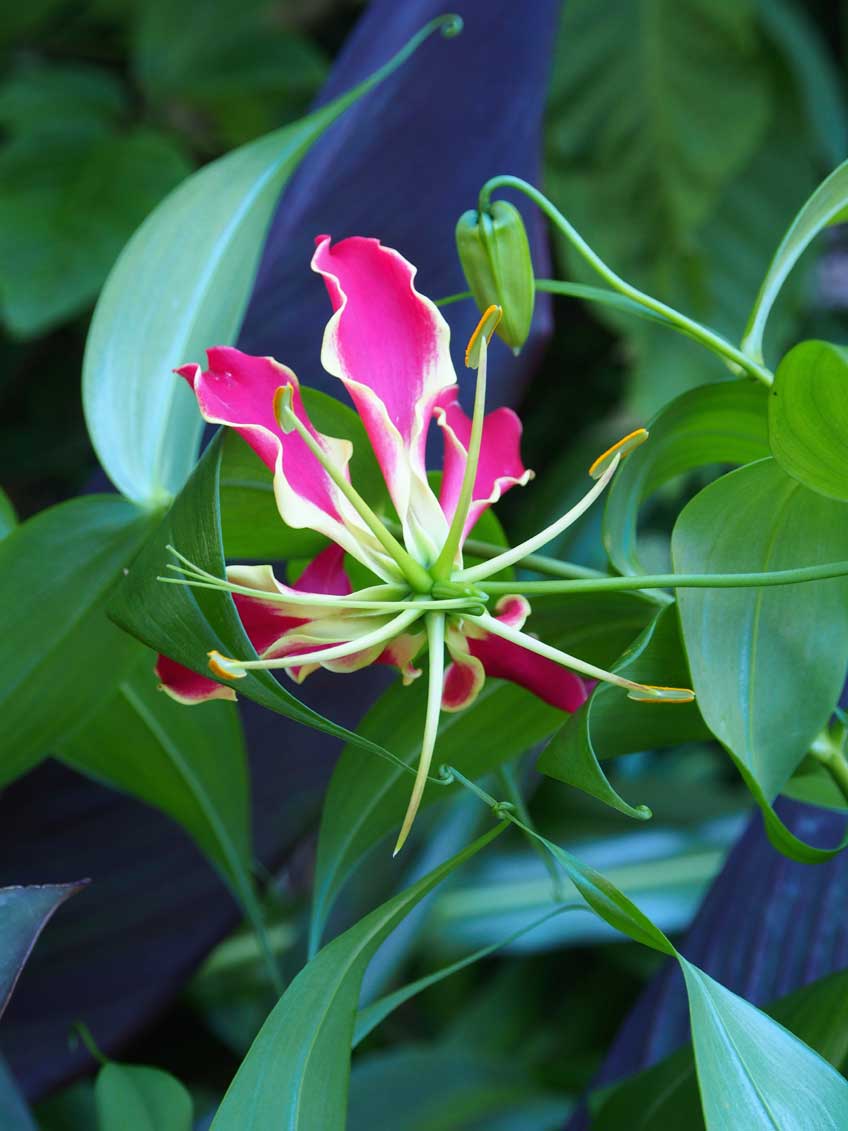
Gloriosa lily
Canna
I grow a number of different cannas. Some have brilliant foliage but dull-coloured flowers so I trim off the emerging flower spikes; others have great
flowers so I grow those at the back of the border.
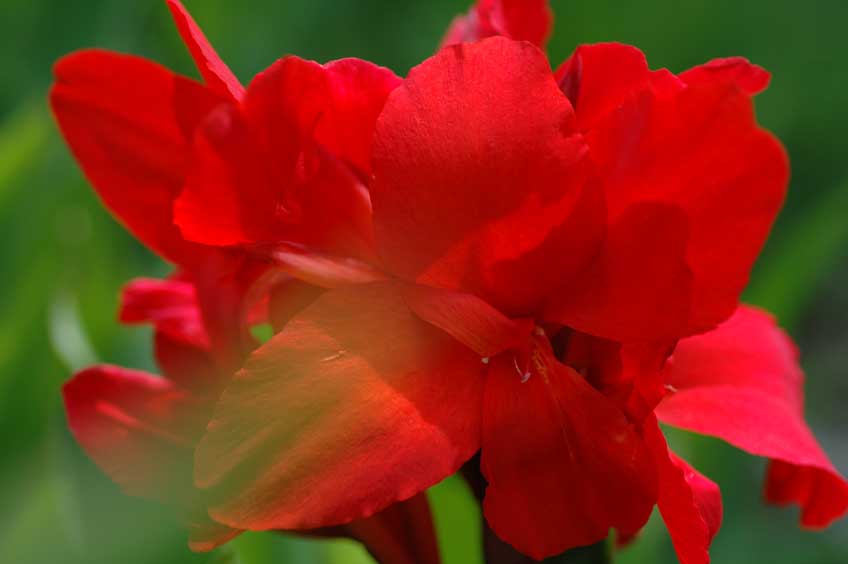
Canna
Hibiscus
My bright orange hibiscus looks like a Chinese lantern strung through the dark green foliage. It responds really well to the extra bucket of water collected
from the shower.

Hibiscus